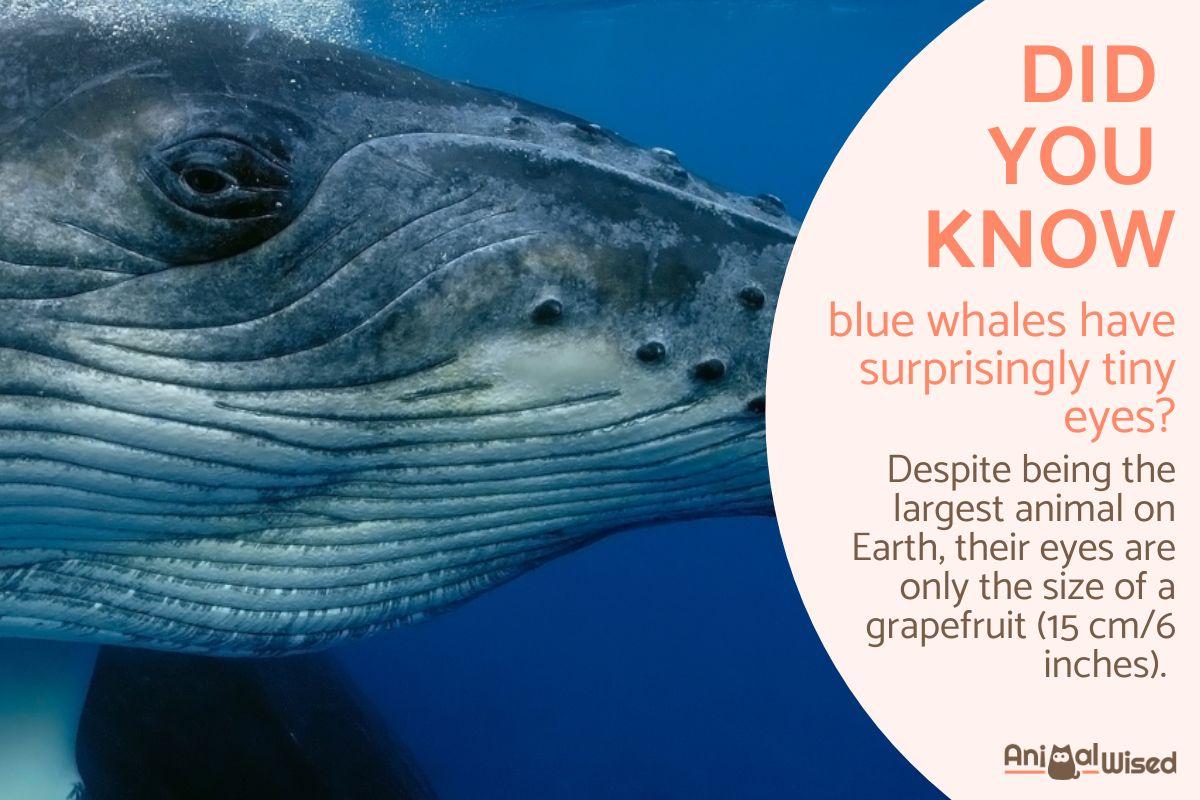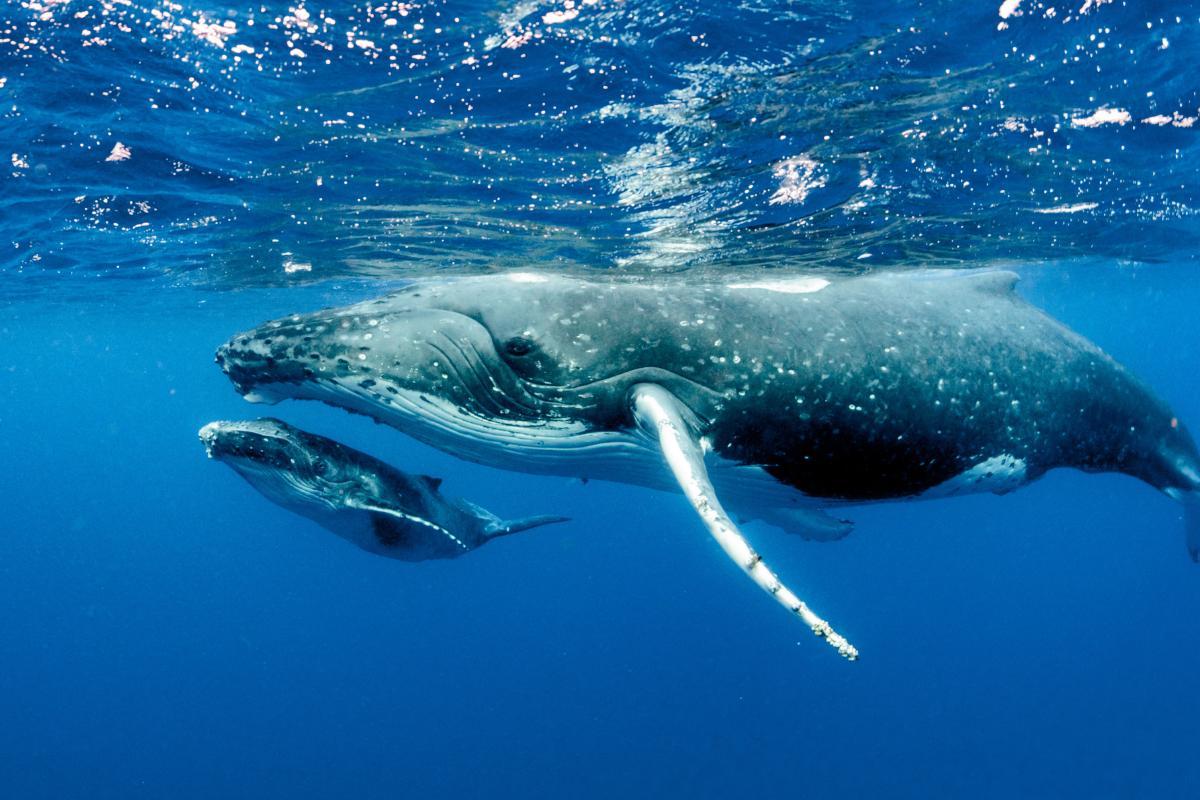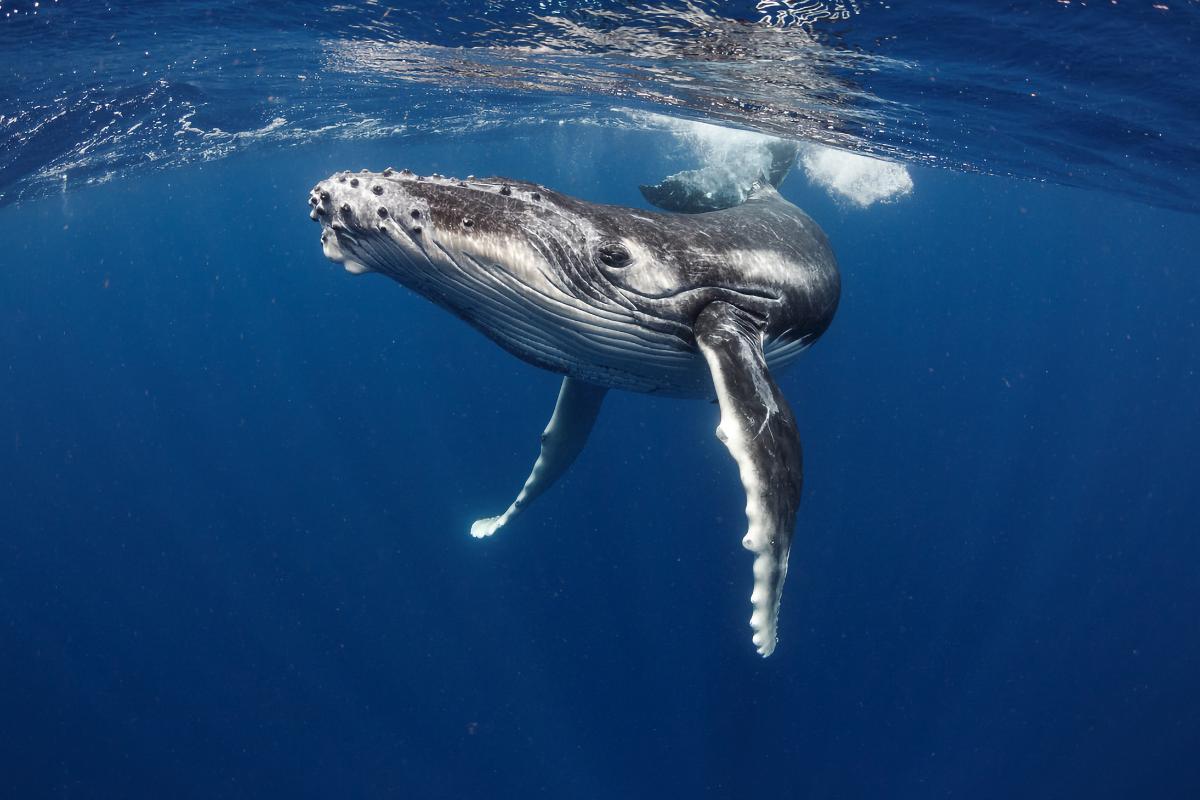Interesting Facts About Blue Whales

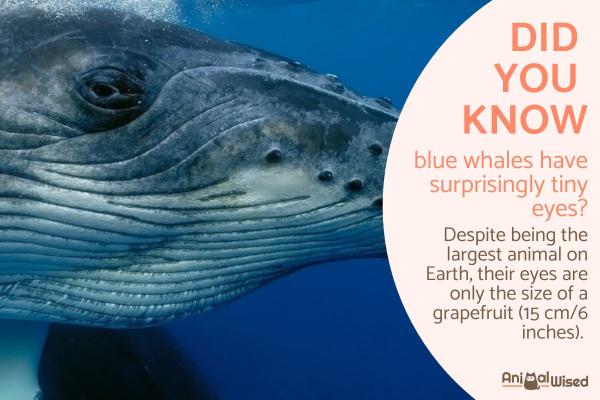
Imagine an animal larger than a jumbo jet, with a heart so massive you could swim through its arteries, that's the blue whale. Narrowing down just 10 fascinating facts about these ocean giants was no easy task because everything about them is extraordinary. They are extraordinary not only because of their enormous size but also because of the great distances they travel, the secret way they communicate, and a host of other factors.
The following AnimalWised article explores 10 amazing facts about blue whales.
- They are the largest animals to ever exist on Earth
- Their heart is the size of a car
- Their tongues are heavier than an elephant
- They are the loudest animals onEarth
- They can sleep while swimming
- Their babies gain 100 kilograms (220 pounds) daily
- They travel 16,000 kilometers (10,000 miles) each year
- They can dive the height of the Empire State Building
- They can live more than 100 years
- They are endangered
They are the largest animals to ever exist on Earth
Blue whales hold two records: they are the largest animals alive today and the largest to ever exist on Earth. They grow up to 29.9 meters (98 feet) long and weigh up to 173 metric tons (190 US tons).
To put this size in perspective, their body equals 33 African elephants combined, stretches longer than two city buses parked end to end, and weighs more than a fully loaded Boeing 737 airplane.
Their size becomes even more clear when looking at their tail, which stretches 7.6 meters (25 feet) across. In fact, these whales are so big that a human could swim through the arteries of their heart.
Ever wondered if there are whales that come close to the blue whale's size? Explore our guide to the ocean's largest inhabitants.
Their heart is the size of a car
A blue whale's heart weighs about 200 kilograms (440 pounds), roughly the size of a small car. During normal swimming at the surface, this heart beats 8 to 10 times per minute. When the whale dives deep, the heart rate drops to just 2 beats per minute to conserve oxygen.
Each heartbeat is powerful enough to push 150 liters (40 gallons) of blood through the whale's massive body. This is enough blood to fill half a bathtub in a single beat, or a standard home water heater tank. In comparison, a human heart pumps about 70 milliliters (0.018 gallons) per beat, meaning one blue whale heartbeat moves as much blood as 2,000 human heartbeats.

Their tongues are heavier than an elephant
A blue whale's tongue weighs 2.7 metric tons (3 US tons), which is more than an adult elephant seal. The whale uses this tongue for filter feeding, a process that works like a giant strainer.
First, the whale gulps a swimming pool's worth of water filled with krill.
The tongue then acts like a piston, pushing this water through hundreds of baleen plates that hang from the upper jaw. These plates, which feel like fingernails, trap thousands of krill while the water flows back into the ocean. In one mouthful, a blue whale can trap up to 6 kilograms (13 pounds) of krill.
Curious about how different whales eat? While blue whales use baleen plates, some of their cousins have impressive sets of teeth. Discover the diversity of whale feeding adaptations.

They are the loudest animals onEarth
Blue whales are among the loudest animals on Earth. Their calls reach up to 190 decibels underwater, louder than a jet engine at takeoff. These calls can travel up to 1,600 kilometers (1,000 miles) through the ocean, which is roughly the distance from New York to Miami.
Whales use these deep sounds to find mates, coordinate migrations, and keep in touch with their pods across vast stretches of ocean. However, modern shipping routes have created an underwater noise problem. A single cargo ship produces around 190 decibels of sound, directly competing with whale calls. With over 50,000 merchant ships operating worldwide, many ocean areas are now as noisy as busy city streets, forcing whales to either "shout" to be heard or lose touch with their pod members.
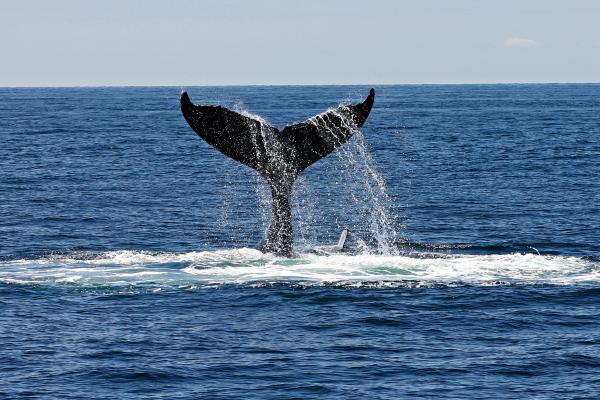
They can sleep while swimming
Blue whales have one of the most unusual sleep behaviors in the animal kingdom. They sleep while swimming and only rest half their brain at a time, a behavior called unihemispheric sleep. The whale keeps one brain hemisphere awake to control breathing (since they need to surface for air) and watch for predators, while the other half sleeps.
They do this by sleeping in a vertical position, known as "logging," where they hang motionless just below the surface with their blowholes exposed to the air. Each session only lasts 10-15 minutes, and they sleep for just 1-2 hours total per day - making them one of the least-sleeping mammals known.
Did you know that other whales sleep very differently from land mammals? From half-brain naps to vertical floating, discover the different ways whales get their rest.
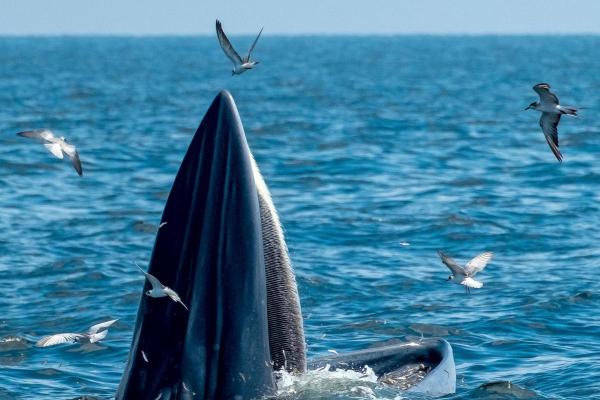
Their babies gain 100 kilograms (220 pounds) daily
Blue whale calves start life already breaking records. A newborn calf measures 7 meters (23 feet) long and weighs 3 metric tons (3.3 US tons).
The calf's growth rate is just as impressive. By drinking up to 225 liters (59 gallons) of milk each day, the baby gains up to 100 kilograms (220 pounds) daily, which is like adding the weight of an adult male lion every single day.
This is possible because blue whale milk is extremely rich, containing up to 50% fat (compared to human milk at 4% and whole cow's milk at 3.5%). The mother produces enough milk to fill about 500 bottles daily.

They travel 16,000 kilometers (10,000 miles) each year
Blue whales are steady rather than fast swimmers. They usually cruise at 8 kilometers per hour (5 miles per hour), which is about the speed of a person jogging or a house cat walking. This steady pace helps them conserve energy while covering vast distances. When threatened or excited, they can surge up to 50 kilometers per hour (31 miles per hour) though they can only maintain this speed for a few minutes.
These giants follow one of the longest migration routes of any mammal. Each year, they swim up to 16,000 kilometers (10,000 miles), which is equal to traveling from Los Angeles to New York four times. They spend summers feeding in cold polar waters where krill is abundant, eating nearly non-stop to build up their blubber layer. When winter approaches, they begin their journey to warmer tropical or subtropical waters to breed and give birth.
During these migrations, blue whales often travel alone or in pairs, neither eating much nor deviating from their ancient migration paths that their ancestors have followed for millions of years.
This methodical swimming style and predictable migration pattern made blue whales easy targets for whalers in the past, as ships could anticipate where and when these creatures would appear.

They can dive the height of the Empire State Building
Despite their enormous size, blue whales are remarkable divers. They can plunge to depths of up to 500 meters (1,640 feet),which is deeper than the height of the Empire State Building. These dives typically last between 10-20 minutes.
What makes this even more impressive is how they adapt their bodies for deep dives. Their lungs actually collapse under the intense pressure, pushing the air into their body tissues. Their rib cage is specially designed to flex inward instead of breaking under this pressure.
Before going deep, a blue whale takes about 60 quick breaths over 10 minutes to load their body with oxygen. During the dive, they slow their heart rate dramatically, direct blood flow mainly to vital organs, and use their stored oxygen with incredible efficiency. Their muscles are packed with a special oxygen-storing protein called myoglobin which helps them stay underwater longer.
The ancestors of blue whales once roamed on land. Uncover this fascinating story of evolution in our exploration of whales' journey to the sea.

They can live more than 100 years
Blue whales can live for up to 110 years, making them one of the longest-living mammals on Earth.
Furthermore, unlike humans, they don't go through menopause, and females can continue breeding well into their 90s. Scientists have also found that, similar to humans, whales show signs of accumulated damage to their DNA as they age, though they appear to have better natural defenses against cancer than smaller mammals.
Did you know some whales can live even longer than blue whales? Explore the lifespans of different whale species in our in-depth article.

They are endangered
Blue whales nearly disappeared in the 1900s when commercial whaling killed 90% of their population. While international laws have protected them since 1966, only 10,000 to 25,000 blue whales remain today.
These survivors face new challenges: ships hitting whales in busy shipping lanes, underwater noise interfering with their communication, and warming oceans affecting their food supply. Each lost whale matters for a species still recovering from near extinction.
However, there are signs of hope. The Antarctic blue whale population, once reduced to just 360 individuals, has grown to about 3,000. Several countries have rerouted shipping lanes to protect whale migration routes, and new technology helps ships detect and avoid whales. Marine scientists have recorded increasing numbers of blue whale sightings in places like the South Georgia waters, where they were once nearly extinct.
If you want to read similar articles to Interesting Facts About Blue Whales, we recommend you visit our Facts about the animal kingdom category.
De Vos, A., Brownell Jr, R. L., Tershy, B., & Croll, D. (2016). Anthropogenic threats and conservation needs of blue whales, Balaenoptera musculus indica, around Sri Lanka. Journal of Marine Sciences, 2016(1), 8420846.
Sears, R., & Perrin, W. F. (2009). Blue whale: Balaenoptera musculus. In Encyclopedia of marine mammals (pp. 120-124). Academic Press.
Tershy, B. R. (1992). Body size, diet, habitat use, and social behavior of Balaenoptera whales in the Gulf of California. Journal of Mammalogy, 73(3), 477-486.
Young, S. A. (2012). The comparative anatomy of baleen: Evolutionary and ecological implications (Unpublished MSc thesis). San Diego State University.





